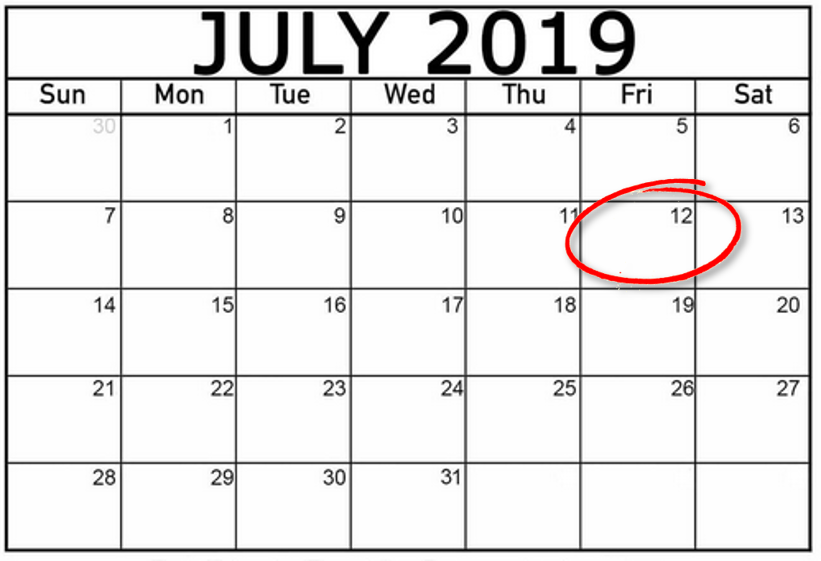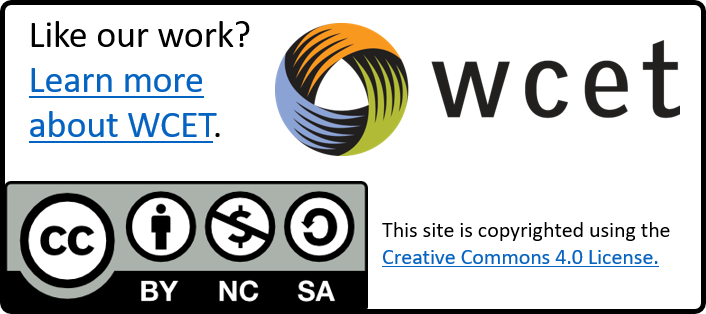The Federal Rulemaking process has taken its next step. The U.S. Department of Education released in the Federal Register a portion of the proposed regulations.

This first set of regulations focuses on accreditation and state authorization. The proposed language came out of the consensus language from the Negotiated Rulemaking Committee meetings that we covered extensively earlier this year.
Because of the long list of issues that were addressed in negotiated rulemaking, we are not surprised that the Department has chosen to release the proposed regulations in related buckets similar to the manner that the issues were reviewed by the negotiated rulemaking committee. Please note that the Department will accept public comments on this set of proposed regulations that are submitted by July 12, 2019. So, time is short.

In this post, we will focus on four issues concerning the proposed regulations related to state authorization and related student notification. We cover how authorization for distance education is tied to financial aid eligibility and provide an overview of the Department’s assessment of the financial impact on institutions for complying. We also address the benefit and process for institutional personnel to submit public comments.
We will offer another post very soon about other proposed regulation that are part of this release by the Department. Our initial thought related to the state authorization regulations is that we are pleased that the negotiated rulemaking came to consensus with language that was agreed upon by key stakeholders. However, we are disappointed that the Department failed to take the opportunity to offer guidance to institutions regarding the compliance management and transition of these proposed regulations as they relate to the now effective 2016 Federal regulations that had been delayed but were the subject of an April 26, 2019 court ruling to vacate the delay. In this post, we focus on the proposed regulations, but will need to follow-up regarding the 2016 regulations in a future entry.
Please note that for the purposes of this post, we are going to refer you to pages numbers in the proposed regulation draft document rather than the Federal Register so that we will be better able to direct you to specific language because the print is bigger, there is only one column of language, and you can use adobe tools to make notes in the margin.
The Proposed Regulations
State Authorization – 34 CFR 600.9(c)
What is being proposed? p.316
An institution that offers postsecondary education through distance education or correspondence courses to students located in a State for which the institution is not located must meet state requirements in that state or participate in a state authorization reciprocity agreement. Upon request, the institution must document the state approvals or the coverage by a reciprocity agreement to the Secretary. Failure of an institution to have the proper approvals in a state makes the institution ineligible to grant federal aid to students in that state.
The institution must make a determination of the location of the student based on institution policies and procedures that are consistently applied to all students. Upon request, the institution must provide written documentation of the determination of location to the Secretary. The time of determination of state location of the student will be upon initial enrollment and, if applicable, when a change of state location is obtained due to formal receipt of information from the student through institution procedures.
What is different? p.53-55
This proposed regulation addressed the location vs. residence concern that was raised in the 2016 Federal Regulations. As you may note on page 54 of the draft document, the Department expressed that they understood that focusing compliance on the location of the student more closely aligns with state oversight. Additionally, regulation language to determine state location was added to provide uniform implementation by requiring the institution to have a process that is applied consistently at the institution.

The institution is directed to make the determination of location at the time of the student’s initial enrollment. The issue of the student that moves is addressed through language indicating that the institution should note a change of state location upon formal receipt of the change through a formal receipt of information from the student.
What you may have noticed is missing is the 2016 Federal Regulation language requiring that an institution document that there is a State process for review and appropriate actions on complaints from enrolled out-of-state students. This requirement in the 2016 language was a concern for public and private non-profit institutions that have students in California. California does not maintain a State process for review and to provide appropriate action on complaints for institutions for which the state has not oversight. This portion of the regulation was removed.
What is our opinion?
We have always been a supporter of a Federal Regulation that ties Title IV funds to state compliance by the institutions. The 2016 Federal Regulation acknowledged reciprocity as a path to state compliance and remains in this proposed regulation.
Institution compliance and student support are benefited by the revision to the language to indicate location of the student as opposed to the 2016 Federal Regulation that was based on the residence of the student. We provided comment after comment that states have oversight based on the location of the activity and that the Federal regulation should be consistent with state oversight. Additionally, we indicated that a student could have a residence for purposes of voting and driver’s license yet be participating in an online course or field experience in a completely different state. A perfect example is an active duty military student. The state agency would have oversight where the student is participating in the online course or field experience. We believe that this change to student location will eliminate confusion.
We have advocated that institutions have a defensible plan for tracking the location of their students. The proposed regulations move in that direction by indicating that the institution maintain consistent policies and procedures that are applicable to all students for the determination of location. The proposed regulation indicates the time for the initial determination of location is at the time of initial enrollment. While the regulation provides a way for the institution to revise this information about a change in the student’s state location based on formal receipt of information from the student, we believe that an institution following this Federal standard could find themselves out of compliance by state standards. Department guidance indicating examples of expected types of formal receipt of information such as clinical placement affiliation agreements, internship process and procedures, academic session registration or other academic events may provide the understanding of what formal receipt of information should entail to offer routine opportunity to know of a student’s change of location.
Why you may want to comment
This proposed revision of 600.9(c) removed many of the concerns that we raised about the 2016 Federal Regulations. The only concern that remains for which you may wish to comment is regarding consistency in tracking the location of the students. The institution will remain responsible for any applicable state laws or SARA requirements including tracking and reporting the location of students.
State Authorization Reciprocity Agreement – 34 CFR 600.2
What is being proposed?
The negotiated rulemaking committee agreed to retain the definition from the 2016 Federal Regulations.
What is different? p.42
Nothing is different.
What is our opinion?
While we appreciate that the Proposed Regulations include the definition of a state authorization reciprocity agreement, the Department did nothing in the reasoning section of this announcement to clarify the language of the definition despite our many inquiries over the past several years. You may recall that former Under Secretary of the U.S. Department of Education, Ted Mitchell, addressed our questions regarding the possibly troubling language about the reciprocity agreement and the states not being prohibited from enforcing their own statues and regulations. We originally felt that this language could undermine the very purpose of reciprocity if the state could enforce any statutes and regulations that it chooses regardless of an agreed upon set of requirements and processes established in the reciprocity agreement.
Ted Mitchell’s response supported reciprocity by stating, “In other words, a distance education reciprocity agreement may require a State to meet requirements and terms of that agreement in order for the State to participate in that agreement.” We most recently addressed this issue, in an April 2019 WCET Frontiers Post, sharing that during rulemaking the Department indicated that they were aware of Ted Mitchell’s letter and supported Ted Mitchell’s opinion. Additionally, at the 2019 NASASPS conference in April, Diane Auer Jones, Principal Deputy Under Secretary of the U.S. Department of Education said that the issue of reciprocity is up to the states and did not see that the federal government should be involved. Although the opinion of the Department appears to be clear, we would like to see definitive guidance to serve as authority on this matter.
Why you may want to comment
It is critical that there be an official interpretation of this language. The Department would have difficulty changing the language of the definition itself as a substantive change to the definition for the Final Regulations could invite a challenge as to whether the change would be a “logical outgrowth” of the proposed rule.

However, the Department could provide clarifying language in the preamble of the Final regulations to provide the much-needed direction and interpretation. We encourage comment for clarification of the language of this definition.
WE STRONGLY RECOMMEND that you comment in support of the Department of Education formally endorsing the interpretation of the definition of a state authorization reciprocity agreement as outline in the letter from Ted Mitchell.
If interpreted differently, reciprocity could be at risk.
Notifications (In General) 34 CFR 668.50 – Proposed to remove and reserve this section.
What is being proposed? p.218
Disclosures required by institutions offering educational programs that could be completed solely through distance education or correspondence courses, excluding internships are located in other regulations or proposed to be moved to consolidate the number of sections and to eliminate duplicity.
What is different? p.210 and p.218
These disclosures for complaint processes, state authorization, adverse actions, refund policies, and professional licensure are required for distance education by 668.50. Other regulations already directed many of these required disclosures for all potential and enrolled students regardless of modality. For example, you may note that disclosure for refund policies is located in 34 CFR 668.42 (a) (2). These disclosures are still required but are found elsewhere and apply to all modalities, not just distance education.
It should be noted that disclosures regarding information about actions against the institution and professional licensure disclosures are being added to section 668.43. Proposed regulations for public and direct disclosures for professional licensure will be discussed in the next section.
In the 2016 regulations, there was a requirement for institutions offering distance and correspondence education to report any “adverse actions” by an accreditor or state agency. In the proposed regulations, the Department does not call the action against the institution an “adverse action”, but a new paragraph, 34 CFR 668.43 (a)(20), proposes to require the institution to supply notice of an investigation, action, or prosecution by a law enforcement agency for an issue related to academic quality, misrepresentation, fraud, if the institution is aware. In the Reasons portion of this announcement, the Department simply indicates that the disclosure of any adverse action a state entity or accrediting agency has initiated has been moved to 34 CFR 668.43 (a) (20).
This new paragraph, like all Institutional Information required by 34 CFR 668.43, is required to all prospective and enrolled students regardless of modality.
Removal of 34 CFR 668.50 should not be seen as the elimination of disclosures for distance education. Quite the contrary. Disclosures to students were an important part of the discussions with the negotiators as is reflected in the proposed sections of 34 CFR 668.43.
What is our opinion?
We agree that modality is irrelevant to supplying necessary information to students. We support a consistent application of disclosures to students. Institutional personnel should assure that notifications required in 34 CFR 668.43 get to all students, regardless of modality.
Why you may want to comment?
You may wish to inquire about more clarity around notice of an action against the institution. We had sought guidance about disclosures for adverse actions in the 2016 Federal Regulations. This new paragraph as a part of 34 CFR 668.43 appears more straight forward for implementation by the institution.
Professional Licensure Notifications – 34 CFR 668.43 (a) (5) (v) and 34 CFR 668.43 (c)
What is being proposed? p.408 and p.411
These proposed paragraphs would require an institution to disclose whether programs leading to professional licensure or certification meet educational requirements. As a public disclosure (on a website and printed materials), the institution must list:
- the states for which the institution meets requirements,
- the states for which the institution does not meet requirements, and
- the states for which the institution has not made a determination of whether the programs meet requirements.
For students considering the program, additional notifications may be required. If the program leading to professional licensure falls in one of the latter two categories above (the program does not meet requirements or the institution has not made a determination) for the state in which a student is located, the institution must inform the student directly of that status. This direct notification (typically by email or letter) must occur prior to the student’s enrollment in the program.
For a student enrolled in the program, if the institution makes a determination that the program does not meet educational requirements for licensure or certification in the state where the student is located, the institution must provide notice directly to the student within 14 calendar days of making that determination. The direct disclosures must be in writing. It is anticipated that this provision would happen most often when a program loses its approval in a state. Upon request, the institution must provide the Secretary with written documents as to the basis of the determination. Location of the student must be determined consistent with processes as indicated in 34 CFR 609(c).
What is different? p. 213-214
As previously discussed in the last section, negotiators agreed that disclosures for distance education would be more appropriately placed with the other institutional information required by 34 CFR 668.43. Many of the disclosures from 34 CFR 668.50 were already required by 34 CFR 668.43. Professional Licensure disclosures were deemed important by the negotiators and added to this regulation. It bears repeating, 34 CFR 668.43 requires the institutional information be made available for prospective and enrolled students regardless of modality. Therefore, the biggest takeaway for professional licensure disclosures is that the disclosures are required for Face to Face Programs AND Distance Education Programs that lead to professional licensure or certification.
The differences in the proposed regulation disclosures are the following:
- Lists of states must be made public whether the program meets educational requirements.
- The disclosure does not require a listing of the prerequisites as is required by 34 CFR 668.50.
- The direct disclosure is based on the student’s state location not residence.
- The direct disclosure is required not only if the institution does not meet educational requirements where the student is located, but also if the institution has not made a determination of whether educational requirements are met.
- A process for determining location and change of state location is provided in the regulation.
- The institution must document the process for determining whether educational requirements are met.
- There is no requirement for the institution to receive student acknowledgment of the direct disclosure as is required by 34 CFR 668.50.
- BIGGEST DIFFERENCE: Disclosures are required for face to face programs as well as distance education.
What is our opinion?
We agree with the negotiators and the Department that disclosing this information to student is extremely important. We have always maintained that if the institution wishes to expand its programs beyond their state that it should take the responsibility to inform the student about the ability to obtain a license or certification where the student is located. It is far more logical that an institution with resources and knowledgeable faculty in the department can obtain professional board information more easily than a much less experienced student.
We recognize that the research may be difficult for some institutions for some programs. We do hope that professional boards will become more aware of these consumer protection efforts to support students wishing to pursue these professions and make their requirements more readily available. The Department continues to greatly underestimate the time and resources needed (see our analysis below) to do this research. However, opportunities are made available through this proposed regulation to keep institutions from falling out of Federal compliance while they develop a process to research each of the programs at their institution.
We appreciate the consistent manner for which location of the student should be addressed and maintained. The Department understands the need for a consistent process to determine location of the student as is found in 34 CFR 600.9 (c) and 34 CFR 668.43(c).
As mentioned in the last section, we believe that disclosures should be provided to students regardless of modality. This world has become significantly more transient and opportunities increasing for students to cross state lines. They need to do so fully informed of the ability to transport their educational experiences to seek licensure or certification in other states.
Why you may want to comment?
We continue to maintain that the research and evaluation of educational requirements is a very time-consuming and costly process. That is NOT to say that is it not a worthwhile process. However, we believe that the Department needs to be aware that the currently effective regulations for professional licensure disclosures and the proposed professional licensure disclosures vary significantly in terms of what state is to be researched, the information that is to be disclosed for the programs and how that information is to be displayed. It would be VERY difficult for institutions to be compliant for the currently effective requirements and then have new processes in place for a possible effective date of July 1, 2020. The Department must advise institutions of the proper compliance for this very important consumer protection need for students pursuing programs leading to professional licensure or certification.
Financial Impact
It appears to us that the Department has underestimated the burdens of compliance (see especially pp. 291-294). The Department’s calculations of burden assume that the research and application of licensing board regulations is a static rather than dynamic task. An administrator would not work for a given number of hours and then move on to another project. Instead, the institutions are responsible for constant monitoring of an ever-shifting landscape.  For example, an administrator at a school of social work would have to notice Michigan regulations, mandated by a 2016 law, requiring persons interested in becoming a licensed social worker in that state to have taken coursework that identifies victims of human trafficking. Multiply that monitoring by fifty states and numerous professional licensing boards. There is no way to count the number of hours required to complete a task that can never be completed.
For example, an administrator at a school of social work would have to notice Michigan regulations, mandated by a 2016 law, requiring persons interested in becoming a licensed social worker in that state to have taken coursework that identifies victims of human trafficking. Multiply that monitoring by fifty states and numerous professional licensing boards. There is no way to count the number of hours required to complete a task that can never be completed.
But even if there were a set number of hours to complete this task, the Department’s estimates are extremely low. Take, for example, professional licensure disclosures required under 668.43 (a) (5): “We further estimate that it would take an institution an estimated 50 hours per program to research individual State requirements, determine program compatibility and provide a listing of the States where the program curriculum meets the State requirements, where it does not meet the State requirements, or list the States where no such determination has been made” (p. 292).
50 hours means one hour per state. Given the complexity of the regulations and the wide variance in quality of state board website, one hour per state is insufficient time to complete this research. In some states, certain professional boards require specific program approval. I n that case, it would take days to research the regulations, assure with program faculty about alignment with the standards, complete the forms, submit the forms, pay the fee, and answer questions from the state. Some state boards require reporting and/or renewals on top of that. The Oregon State Board of Nursing, for example, requires out-of-state institutions whose students are completing clinical placements in Oregon to provide detailed information about the placements, including pre-approval of sites, names of students, and preceptor agreements. This is not insignificant work.
n that case, it would take days to research the regulations, assure with program faculty about alignment with the standards, complete the forms, submit the forms, pay the fee, and answer questions from the state. Some state boards require reporting and/or renewals on top of that. The Oregon State Board of Nursing, for example, requires out-of-state institutions whose students are completing clinical placements in Oregon to provide detailed information about the placements, including pre-approval of sites, names of students, and preceptor agreements. This is not insignificant work.
Or how about the individualized disclosures required under 668.43 (c). “We estimate that institutions would take an average of 2 hours to develop the language for the individualized disclosures” (p. 293) Does that mean per student? Per state? Per program? And how often would that be updated? Any implementation of complicated research in this field takes a lot longer.
The Department continues: “We estimate that it would take an additional average of 4 hours for the institutions to disclose this information to prospective and enrolled students for a total of 6 hour of burden” ( p. 293). It is unclear what tasks the Department includes in these tasks, let alone how they would add up to 4 hours, especially given the wide variety of institutional staff structures and procedures. Some campuses complete in one hour what takes another a week. How do you, campus state authorization professionals, react to these estimates?
Again, while we support this new requirement, you may wish to comment about how unrealistic the estimates are. Distance programs should have a head start on compliance, but this notification was never required previously for face-to-face, on-campus programs, which typically have larger enrollments. It may be difficult for them to comply by July of next year.
Commenting on the proposal
How to Comment
Join the fun. Comment! VOLUME COUNTS. The Department pays attention when there are multiple comments on the same topic.
Who Should Comment?
Institutional personnel, program personnel, or individuals may comment. If you serve students in other states, you should consider commenting. For an institutional or programmatic comment, you need to navigate the proper government relations channels at your institution. This may be difficult given the July 12 deadline.
If you comment as an individual, you can’t use your institution or organization letterhead. You can supply your name, title, and employer as context. It might be good to reiterate that you are not commenting in your official capacity.

How Do I Comment?
Directions on how to comment appear in the “Addresses” section of the of the notice of proposed rulemaking. You may: “Submit your comments through the Federal eRulemaking Portal or via postal mail, commercial delivery, or hand delivery. We will not accept comments submitted by fax or by email or those submitted after the comment period. To ensure that we do not receive duplicate copies, please submit your comments only once. In addition, please include the Docket ID at the top of your comments. If you are submitting comments electronically, we strongly encourage you to submit any comments or attachments in Microsoft Word format.”
What Should I Say?
Personalize it as form letters get less attention. Briefly tell your story. Who are you? What impact would these regulations have on students? What impact would these regulations have on your program? Focus on what would have the greatest impact on you and your students. Say why the proposed would regulations would help or hurt you, your institution, and (especially) your students. Discard the rest.
Be respectful. We can be better than the presidential nominees.
Make positive or helpful suggestions. We all hate the responses which object to everything without supplying, at least some, helpful alternatives. This helps to address the sense that we are merely objecting to any type of oversight or anything that inconveniences us. We’re for regulations that serve a purpose and for which the cure is not worse than the disease. If you have a way to fix the problem, suggest it.
Ask questions about clarifications that are needed.
Next Steps
As we noted, the comment period closes on July 12, so act quickly. The Department will review and must respond to all pertinent comments. If they issue their response and final regulations by the end of October, then the regulations go into effect on July 1 of next year. The outcomes will certainly be discussed at WCET’s Annual Meeting in early November.
You can expect another post in the next few days addressing the other proposed regulations that are part of this announcement. We hope to provide analysis on these important areas so that you will take the next step and submit a public comment in the areas for which you believe need more guidance or revision. Your voice is important!
Watch for more from WCET and the WCET/State Authorization Network (SAN)!

Russ Poulin
Executive Director
WCET – the WICHE Cooperative for Educational Technologies
rpoulin@wiche.edu @russpoulin

Cheryl Dowd
Director, State Authorization Network
WCET – the WICHE Cooperative for Educational Technologies
cdowd@wiche.edu

Dan Silverman
Assistant Director, State Authorization Network
WCET – the WICHE Cooperative for Educational Technologies
dsilverman@wiche.edu






 For example, an administrator at a school of social work would have to notice Michigan regulations, mandated by a 2016 law, requiring persons interested in becoming a licensed social worker in that state to have taken
For example, an administrator at a school of social work would have to notice Michigan regulations, mandated by a 2016 law, requiring persons interested in becoming a licensed social worker in that state to have taken  n that case, it would take days to research the regulations, assure with program faculty about alignment with the standards, complete the forms, submit the forms, pay the fee, and answer questions from the state. Some state boards require reporting and/or renewals on top of that. The Oregon State Board of Nursing, for example, requires out-of-state institutions whose students are completing clinical placements in Oregon to
n that case, it would take days to research the regulations, assure with program faculty about alignment with the standards, complete the forms, submit the forms, pay the fee, and answer questions from the state. Some state boards require reporting and/or renewals on top of that. The Oregon State Board of Nursing, for example, requires out-of-state institutions whose students are completing clinical placements in Oregon to




5 replies on “New Federal Regulations Ready for Your Comments – State Authorization and Student Notifications”
[…] under investigation: You may recall from our previous blog about the proposed regulations, the Department proposes that the institution disclose under 34 CFR 668.43(a)(20) if they are aware […]
[…] New Federal Regulations Ready For Your Comments State Authorization And Student Notifications […]
[…] 2016 regulations. For a more detailed review of those proposed regulations, check out WCET’s June 13th and June 14th posts. The TL;DR (too long; didn’t read) version, though, is that enough […]
[…] may recall that we provided analysis of the proposed regulations that were related to State Authorization and also responded to the Department’s request for […]
[…] New Federal Regulations Ready for Your Comments – State Authorization and Student Notifications, published 6/13/2019, New Federal Regulations Ready for Your Comments – Accreditation-Related Regulations, published 6/14/19, and Final Federal Regulations for State Authorization Released! published 11/4/2019 […]